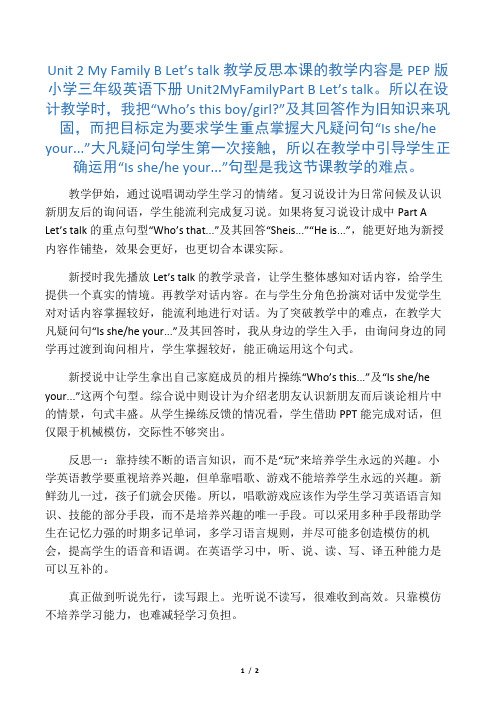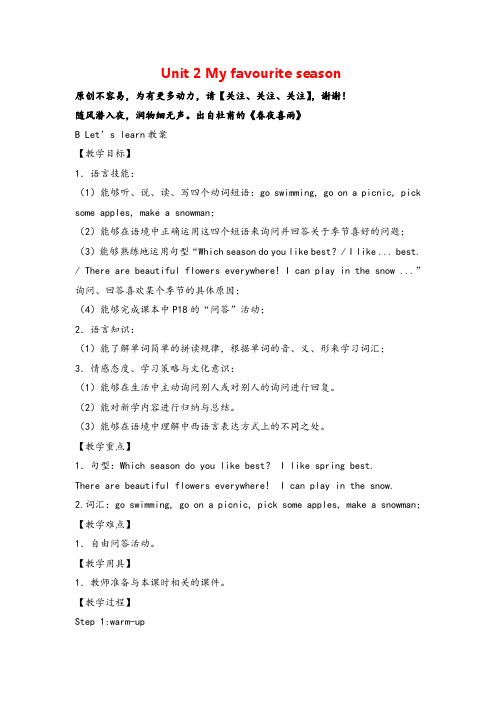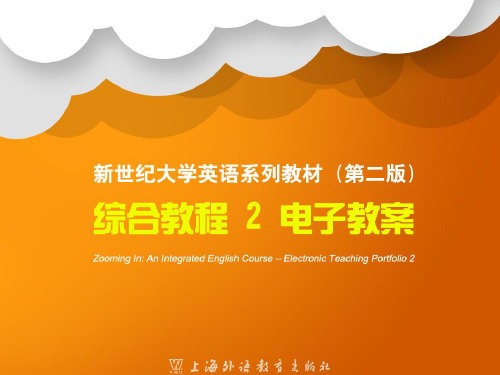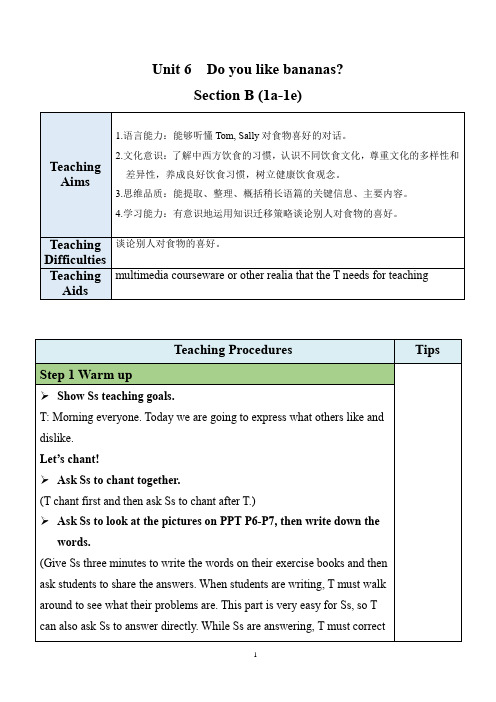b_unit_教案
- 格式:doc
- 大小:212.50 KB
- 文档页数:20

教案:Unit13 SectionB第三课时(1a-1d)Learning goals1. 功能Talk about the future plans.2. 词汇、短语和常用表达Learn to use words and expressions: degree, manager, believe inLearn to use sentences:(1)What do you hope to do in the future?(2)I hope to get a business degree and become a manager.(3)Mrs. Chen believes in all of them and tells them to “go for it”.3. 文化知识To practice preparing and giving a speech.[设计意图:目标引领,言简意赅,从功能、词汇和文化知识等方面阐述本节课的学习目标,使接下来的学习更加具有目的性。
]Pre-listening activitiesStep 1PreviewPut the following into English orally. Then write them down without looking at the book.translate them. Please stand up without putting up your hands. Then I'll give you one mark. Let's see which group is the best.[设计意图:利用翻译的形式让学生快速准确地说出所预习的句子,检测预习情况,使学生有针对性地学,老师有针对性地教。
]Step 3Warm up and lead in (此部分是视频,详见课件)Play the video for the students to enjoy a song.Ask the students to find out the answers to the following questions.(1)What can you find in this song?______________________________________ __________________________________(2)List some jobs you hear with your partner.______________________________________ __________________________________And check their work with several students.[设计意图:利用视频材料创设语用情境,激发学生的学习兴趣,了解不同的职业,导入新课。

Unit 2 Last weekendPart B Let’s talk一、教学目标1. 能够听、说、认读单词:magazine, better, faster等。
2. 能够听懂、会说并运用句型:“Was it interesting? What did … do last weekend? Did you see a film? No, I had a cold.”提问并回答有关周末做过的事。
3. 能够理解课文大意,用正确的语音、语调朗读对话,并能进行角色表演。
4.能够通过比较选出自己认为更有趣的周末并明确今后的周末活动。
二、教学重难点重点:1. 能够听、说、认读单词:magazine, better, faster等。
2. 能够听懂、会说并运用句型:“Was it interesting? What did … do last weekend? Did you seea film? No, I had a cold.”提问并回答有关周末做过的事。
难点:能够听懂、会说并运用句型:“Was it interesting? What did … do last weekend? Did you see a film? No, I had a cold.”提问并回答有关周末做过的事。
三、教学准备课件,录音,课文视频四、教学过程五、板书设计Unit 2Last weekendPart B Let's talkWords: magazine, better, fasterSentences:Was it interesting?What did you do last weekend?— Did you see a film?—No, I had a cold.。

Unit 2 My Family B Let’s talk教学反思本课的教学内容是PEP版小学三年级英语下册Unit2MyFamilyPart B Let’s talk。
所以在设计教学时,我把“Who’s this boy/girl?”及其回答作为旧知识来巩固,而把目标定为要求学生重点掌握大凡疑问句“Is she/he your...”大凡疑问句学生第一次接触,所以在教学中引导学生正确运用“Is she/he your...”句型是我这节课教学的难点。
教学伊始,通过说唱调动学生学习的情绪。
复习说设计为日常问候及认识新朋友后的询问语,学生能流利完成复习说。
如果将复习说设计成中Part A Let’s talk的重点句型“Who’s that...”及其回答“Sheis...”“He is...”,能更好地为新授内容作铺垫,效果会更好,也更切合本课实际。
新授时我先播放Let’s talk的教学录音,让学生整体感知对话内容,给学生提供一个真实的情境。
再教学对话内容。
在与学生分角色扮演对话中发觉学生对对话内容掌握较好,能流利地进行对话。
为了突破教学中的难点,在教学大凡疑问句“Is she/he your...”及其回答时,我从身边的学生入手,由询问身边的同学再过渡到询问相片,学生掌握较好,能正确运用这个句式。
新授说中让学生拿出自己家庭成员的相片操练“Who’s this...”及“Is she/he your...”这两个句型。
综合说中则设计为介绍老朋友认识新朋友而后谈论相片中的情景,句式丰盛。
从学生操练反馈的情况看,学生借助PPT能完成对话,但仅限于机械模仿,交际性不够突出。
反思一:靠持续不断的语言知识,而不是“玩”来培养学生永远的兴趣。
小学英语教学要重视培养兴趣,但单靠唱歌、游戏不能培养学生永远的兴趣。
新鲜劲儿一过,孩子们就会厌倦。
所以,唱歌游戏应该作为学生学习英语语言知识、技能的部分手段,而不是培养兴趣的唯一手段。

Unit 2 My favourite season原创不容易,为有更多动力,请【关注、关注、关注】,谢谢!随风潜入夜,润物细无声。
出自杜甫的《春夜喜雨》B Let’s learn教案【教学目标】1.语言技能:(1)能够听、说、读、写四个动词短语:go swimming, go on a picnic, pick some apples, make a snowman;(2)能够在语境中正确运用这四个短语来询问并回答关于季节喜好的问题;(3)能够熟练地运用句型“Which season do you like best?/ I like ... best. / There are beautiful flowers everywhere! I can play in the snow ...”询问、回答喜欢某个季节的具体原因;(4)能够完成课本中P18的“问答”活动;2.语言知识:(1)能了解单词简单的拼读规律,根据单词的音、义、形来学习词汇;3.情感态度、学习策略与文化意识:(1)能够在生活中主动询问别人或对别人的询问进行回复。
(2)能对新学内容进行归纳与总结。
(3)能够在语境中理解中西语言表达方式上的不同之处。
【教学重点】1.句型:Which season do you like best? I like spring best.There are beautiful flowers everywhere! I can play in the snow.2.词汇:go swimming, go on a picnic, pick some apples, make a snowman;【教学难点】1.自由问答活动。
【教学用具】1.教师准备与本课时相关的课件。
【教学过程】Step 1:warm-up1.Greeting.师生用英语互相问候。
2.Let’s sing. 教师播放课件中的视频,引导学生唱歌谣“What’s your favourite season?”;Step 2:Presentation1.Guess and talk.教师继续播放课件,教师提问,学生回答问题。


Unit 6 Do you like bananas?Section B (1a-1e)Unit 6 Do you like bananas?Section B (2a-2c)➢Ask Ss to write more healthy food and unhealthy food.Answers will vary.While-readingFirst Reading➢Reading Tip 1: PredictingT asks Ss to look at the title and pictures in 2b, try to predict: What's the article about?(T tells Ss what predict is: to have a guess. Any answer is OK here. Ss can tell the reason why they guess so.)Second Reading➢Reading Tip 2: scanningAsk Ss to scan the passage and complete the thinking map.➢Reading Tip 3: ScanningAsk Ss to judge which sentence is right and which sentence is wrong according to the passage.Answers: 1. F 2. F 3. T 4. T 5. TThird Reading➢Reading Tip 4: RetellingT asks Ss to retell the passage.(T can use the table above and give some clues to help Ss retell. T can say the first words of the sentences or use transitional words or questions to remind them of the next sentence if students forget. There will be somegrammatical mistakes when they are retelling, so teachers must use some transitional words to connect the sentences together, or to correct their pronunciations.)2b➢Ask Ss to read the magazine article and circle the food words.➢T ask Ss to write down the food that Cindy likes for meals and David likes for meals.T: Just now you have circled all the words about food. What does Cindy like for breakfast, lunch and dinner? What does David like for breakfast, lunch and dinner? Now write B for breakfast, L for lunch and D for dinner after the words.➢Let each S take out a piece of paper. Show Ss PPT P18 and ask them to write down the Chinese translation for each phrase.2c➢Ask Ss to write down five sentences about Cindy’s eating habits. While Ss are completing 2c, walk around the room and look at the sentence of different Ss. Choose sentences in which there are common errors, and write these sentences on the board. Then have Ss work in pairs to find the errors and suggest corrections. Elicit from Ss how to correct the sentences, and make the corrections on the board.Answers will vary.Post-reading➢Optional choice: Divide Ss into groups of four. Ask them to discuss what they like to eat for each meal. T can encourage Ss to say more about their preferences, e.g. I like ... but I don’t like ..., I always / never have ... for ... (T can write these sentences on the board if necessary).Unit 6 Do you like bananas? Section B (3a-Self Check)Exercise 1➢Ask Ss to write the plural forms of the words in the box on the left, then put them into the correct columns.Answers 1:Exercise 2➢First, ask Ss to choose a topic (i.e. the food / sports / colors they like or dislike), then let them write five sentences for that topic. Answers will vary.Exercise 3➢Tell Ss that they need to think about the food / sports / colors their parents like and write five sentences.Answers will vary.(T can encourage Ss to correct each other’s sentences first, then pick some Ss to read their answers to the whole class. )。
八年级下册教案设计Unit 6 Enjoying CyclingTopic 1 I have some exciting news to tell you.Section BⅠ. Material analysis本节课建议用1课时学完。
主要活动为Section B的1a和2。
本课教学内容继续围绕旅游展开。
要求学生通过本课的学习活动掌握黑体单词和短语book tickets/rooms, pay, pay for…, hotel, fridge, standard, single, condition和comfortable, 理解白体词汇sleeper和air conditioning, 学会如何用英语预订车票、房间,如何询求和提供帮助,继续学习动词不定式的用法,同时教育学生要学会做好出行前的准备;培养学生热爱旅游、积极探索的态度。
Ⅱ. Teaching aimsKnowledge aims:1. 学生能正确掌握元音连读的技巧;拼读并运用黑体单词。
2. 学生能正确掌握pay, cost, spend 和take 表示花费时的不同用法。
3. 学生能自如地运用以下句式提供帮助:Can I help you? / What can I do for you?4. 学生能学会如何用英语预订车票、房间。
5. 学生能进一步掌握动词不定式的用法。
Skill aims:1. 能听懂有关预订车票、房间的短文或对话,并从中获取信息。
2. 能使用英语预订车票或房间等。
3. 能理解有关旅游、预订等方面的叙述,并从中获取需要的信息。
4. 能用英语制订旅游计划。
Emotional aims:1. 具有积极参与课堂上各种英语实践活动的兴趣。
2. 培养学生热爱旅游、积极探索的态度。
Ⅲ. The key points and difficult pointsKey points:1. 正确掌握元音连读的技巧。
2. 正确掌握pay, cost, spend 和take 表示花费时的不同用法。
Section B第5课时(3a~3b)原创不容易,为有更多动力,请【关注、关注、关注】,谢谢!令公桃李满天下,何用堂前更种花。
出自白居易的《奉和令公绿野堂种花》类别学习重点重点单词 fair, unfair 重点短语 do chores重点句式1. Children should do chores because…2. I think it’s fair/unfair for children to…课前预习写一写1.公平的fair2.不公平的unfair译一译做家务do chores背一背1.孩子们不应该做家务,因为……Children should not do chores because…2.我认为对孩子们来说……是合理的/不合理的。
I think it’s fair/unfair for children to…新课导入Teacher:Do you think children should do some chores at home? Why or why not? Discuss this with your partner, then write a letter to express your opinion.【完成教材3a~3b的教学任务】1.你认为学生应该做家务吗?就这个话题和你的搭档进行讨论,发表自己的观点,并且把讨论要新课展示点写下来,然后请部分学生当众陈述自己的观点,完成3a。
2.根据3a中的观点要点,写一篇短文阐述自己的观点,完成后小组内互相交流纠错,借鉴好词好句,教师抽查点拨。
典例参考I think we should help parents do some chores.First, after a whole day’s work, our parents must be very tired. If we help them with the housework, they’ll feel quite happy and pleased. And by doing housework, we will know how har it is for our parents to go to work everyday while raising a family.We will make even greater efforts in our study later on.Second, doing housework can not only train in our abilities, but also help us makea sense of responsibility. There is a lt of housework in each family. As a member of thefamily, each of us should share housework with our parents. We can realize we’re members of our families through the housework.Finally, doing som housework can give us a chance to do some physical exercses. Since the students have to sit most of the time,doing housework is certainly beneficial to our health.So, I think it is necesary for usto do some housework.3.让学生参考学案上的单元同步作文指导,然后完成实战演练。
Unit 3 Spring Begins from MarchPart B学生画出各自最喜欢的季节,之后,上台向大家展示所画的画,并用所学句型描述自己喜欢的季节及其原因。
【知识与能力目标】能听懂Let ’s talk 对话中表示月份和日期的词汇、并掌握英文日期的表达方式。
【过程与方法目标】Learn to say, Let ’s talk, Tick, Think and answer【情感态度价值观目标】能运用Which is your favorite season? Spring / Summer / Autumn / Winter. Why? Because ... It is ... The trees ... The flowers ... The mountains ... I can ... Because we have ... on ... 谈论最喜爱的季节及原因。
【教学重点】能熟练说唱Let ’s chant 部分的歌谣。
【教学难点】通过完成Part C 部分的活动,对本单元所学的有关季节的词汇和功能句型进行全面复习和检测。
图片,PPT课程导入(Leading In)(1)课前热身师生一起说唱上一课时所设计的儿歌,达到激发学生兴趣和复习月份单词的目的。
January, February,(手指表示1和2) one and two. (拍手)March, April,(手指表示3和4) three and four.(拍手)May, June,(手指表示5和6) five and six. (拍手)July, August,(手指表示7和8) seven and eight.(拍手)September, October,(手指表示9和10) nine and ten.(拍手)November, December,(手指表示11、12) the year is done.(拍手)(2)新课导入小游戏:我是小记者教师拿出所准备的麦克风,走到学生面前并介绍:T: Hello, everyone! I am a reporter. Now please answer my question: Which month is after ... (月份)?Ss: It’s ... (月份).然后快速走到另一个学生的面前,用麦克风提问:T: Which month is before …(月份), S1?S1: It’s ... (月份).得到学生的回应后,接着对全班同学发问:T: Now do you know which season is after ... (季节)?Ss: It’s ... (季节).多次轮流,让学生在轻松愉快的氛围中复习月份和季节单词,为新课展示部分做铺垫。
总 课 题 9B Unit 3 Asia 总课时 9 第1课时 课 题 Welcome to this unit 课型 New
教学目标 知识目标 To learn some new words and expressions 能力目标 Talk about famous things in the Asia
情感目标 Make the students know the fact that they will succeed as long as they work hard. 教学重点 Make the Ss free to talk in and after class about the famous things. 教学难点 How to finish the task of speaking. 教学准备 A computer, notebooks and work sheets.
课前预习 Try reading the parts and search for some information about Asia online if possible.
学情分析 The students are sure to be interested in studying something about Asia, however, they may feel it difficult to learn some expressions in English. 教学过程 教学环节 教 师 活 动 学 生 活 动 设计意图
Step 1 Lead-in Step 2 Presentation Step 3 Practice Step 4 1. T:Who has been to Thailand/ Korea/Malaysia/Singppore/ Indonesia/Japan? 2.T:Which country would you like to visit in Asia?
1.Ask Ss to talk about the culture of China: giant panda,writing,tea/silk/ Spring Festival/ the Yellow River 2.T:Eddie and Hobo are visiting the Great Wall. What do they think of it?
1. Read the dialogue and try to answer the following questions (1) What does Hobo think of the Great Wall? (2) Does Eddie like visiting the Great Wall? (3) Do you think Eddie will continue to the end? 2. Ask the Ss to repeat and act the dialogue out.
1. T:The American exchange Presentation Step 5 Activity Step 6 Homework students want to learn more about things in China. Millie is showing them some pictures from a magazine. Help her write the correct names under the pictures. 2. Ask the Ss to talk about Chinese thins in pairs 3. Ask the Ss to talk about the places of China (1) The Terracotta Warriors are located just Outside Xi’an, in Lintong District. They are made for Qing Shihuang over 2,000 years ago. All the Warriors and horses are made of local Clay. The Terracotta Warriors are one of the wonders in the world. (2) Tian’anmen Square is the largest downtown square in the world. It covers an area of 44 hectares. which is big enough to hold one million people. It is one of the most famous and popular places in China.
T: What other places of interest in China do you know? Can you give a speech about them?
Recite all the words and phrases.
板书设计 教后感 总 课 题 9B Unit 3 Asia 总课时 9 第2课时 课 题 Reading 1 课型 New
教学目标 知识目标 To understand the context of two cities in China To recognize and understand vocabulary and sentences .
能力目标 To be able to do some reading comprehension exercises. 情感目标 To try to read carefully. 教学重点 To understand the context of two cities in China . 教学难点 教学准备 A computer, notebooks and work sheets.
课前预习 Try reading the text and underline the puzzles.
学情分析 The students have learned some new words. This will help them to read the context and complete some exercises. 教学过程 教学环节 教 师 活 动 学 生 活 动 设计意图 Step1 Pre-reading .
Step 2 While-reading
Part 1 Welcome to
1. T: Do you like traveling? let’s visit two cities in China---Beijing and Guilin. 2. T: Look at this picture. The building looks wonderful. Can you tell me where it is? 3. T: Yes, you are right. It’s in Beijing. Do you know why so many people like to visit Beijing? There are many tour attractions in Beijing. The forbidden city is very famous. Many emperors in different dynasties lived there. Every year, many visitors gather there to visit it. 4. T: There are some other attractions in Beijing, too. The Great Wall is one of seven wonders of the world. It is near the northern border of China. If you think it is tiring to climb it, you can hire a bike. 5. T: Now please look at them again and read after me: 1. T: Beijing is a big city. In our books, we mainly talk about four parts of it. What are they? 2.T: Do you want to know more about the four places? let’s visit the Forbidden Beijing Part 2 All about Guilin
Step3
City first. Listen and answer Now, let’s check the answer. 3. T: The second place we are going to visit is Tian’anmen Square. 1). What does the word ‘Tian’anmen’ mean? 2). Is it the biggest square in the world? 3). What can we watch there? 4). What do the local people like to do there? 4.T: Now let’s visit the third place, ‘ the Summer Palace’. 5. T: Do you want to visit the Great Wall? Now let’s go and have a look! 6. T: Just now, we visited four different parts of Beijing. Do you still remember them? Try to match the places with their descriptions
1.. T: We all know that Beijing is the capital of China,it’s in northern China.。In the south of China, there are also many beautiful places.Do you want to have a look? 2. T: Look at the hill. It looks like an elephant. Do you know which city it is in? Yes, it’s in Guilin. Do you want to visit Guilin with me? Come on! Let’s go! 3. T: 1)Where is Guilin? 2). What is the name of the famous cave? 3). How can you visit Li River? 4. T: Can we check the answers now? 5. T: Do you know what it is famous for? Yes, it’s famous for the beautiful water and mountains. Read the 1st paragraph and fill in the blanks. 6. Have you got the answers? Now let’s check them: 7. Read the second paragraph and fill in the blanks. Do you know the answers now? Yes. The Reed Flute Cave is in the north-west of the city. The rocks there are in different shapes.